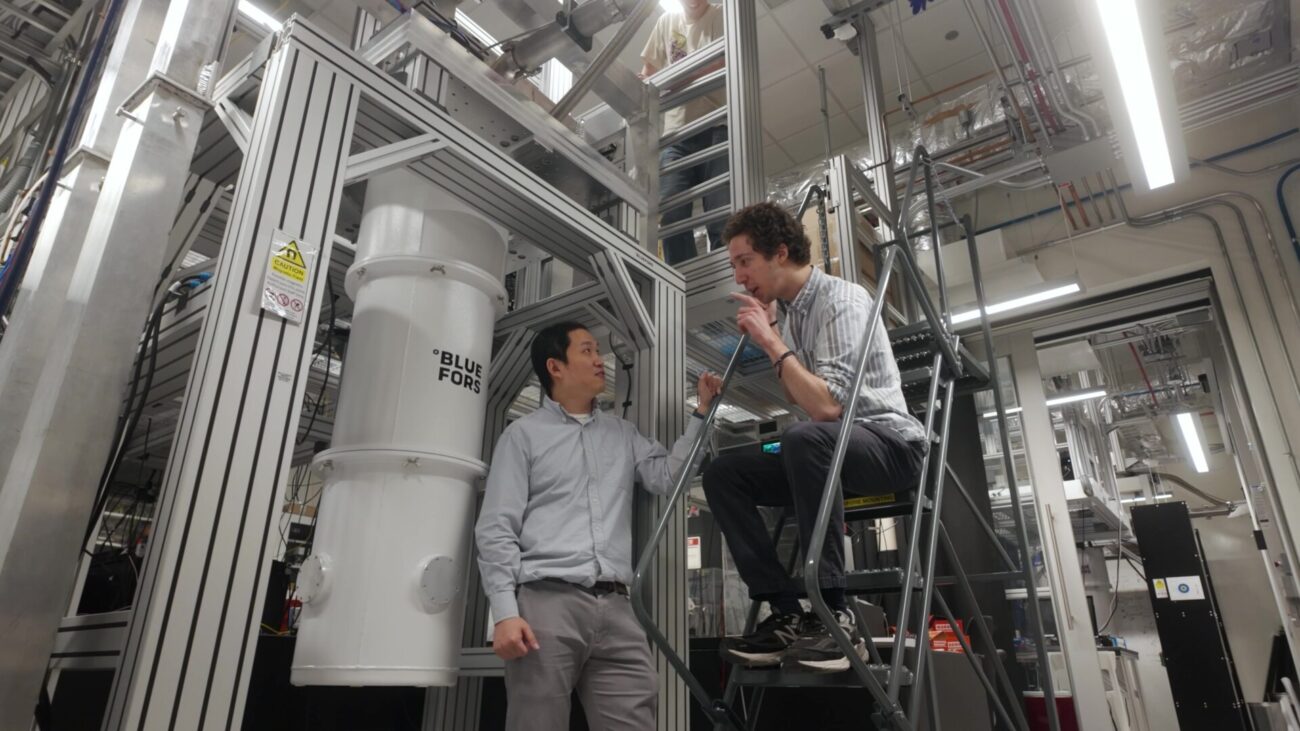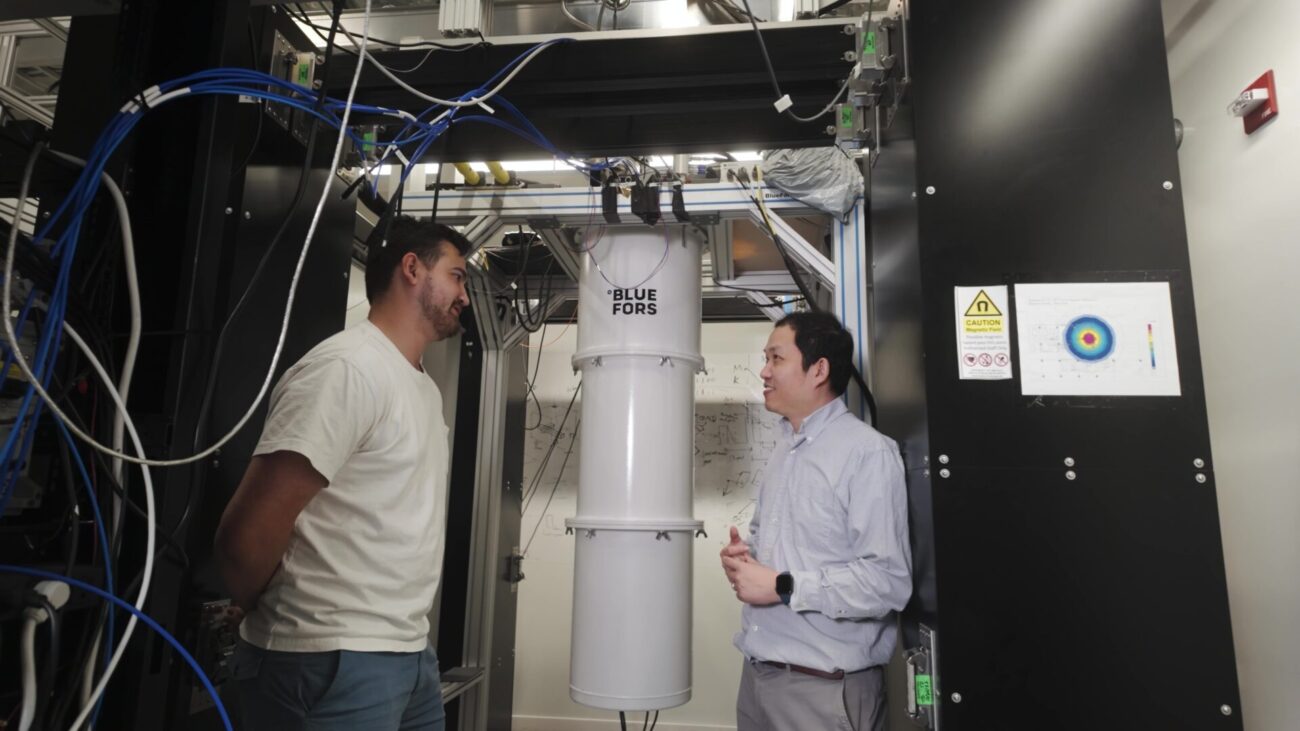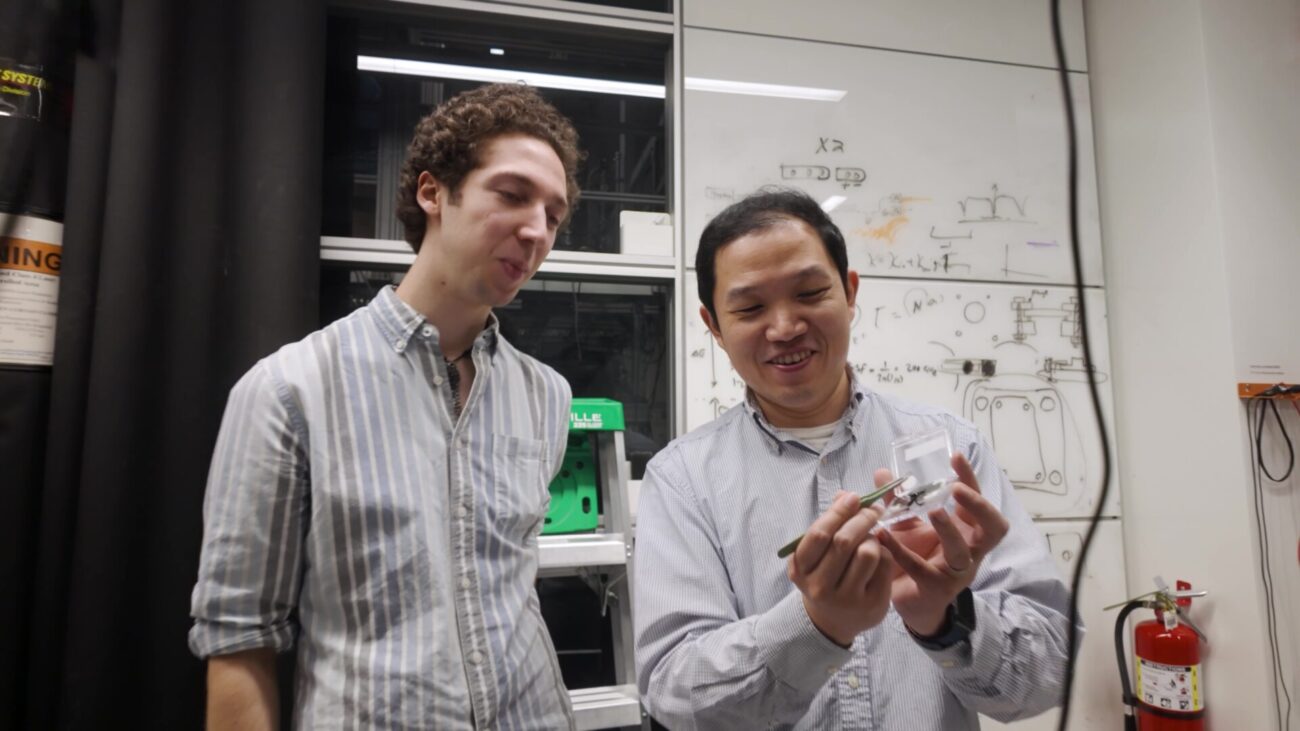Building the Foundations of the Quantum Internet

The internet as we know it today has become almost second nature to us. We’re so familiar with having access to a world of information at our fingertips and connectivity across the globe, we don’t even think about it. It’s just there.
But there was a time before the World Wide Web emerged, when the world’s computers were isolated and disconnected. Connecting them together into a global network unleashed the new dimensions of information sharing on today’s internet.
Right now, quantum technologies are developing in similarly isolated forms around the world. Instead of operating as individual pieces of hardware, much larger benefits might be attained by connecting these together to create distributed networks of quantum hardware.
Prof. Tian Zhong is the Assistant Professor of Molecular Engineering at the Pritzker School of Molecular Engineering at the University of Chicago, and the recent winner of the 2025 Sturges Prize for his contributions to the field of solid-state quantum nanophotonics. His lab at the university is working on the building blocks for exactly this type of distributed network: the quantum internet.
The Promise of Quantum Internet
The quantum internet aims to connect numerous different pieces of quantum hardware—quantum computers, quantum communication terminals, quantum sensors—to create a global ‘quantum network’.
Quantum information has several unique properties that offer advantages over classical networks. These properties, such as superposition and entanglement, can be leveraged for advanced information processing.
To unlock the quantum internet, entanglement is the key. Entanglement is a state where two bits of quantum information can be strongly correlated to each other, even though they are physically separated over large distances—what Einstein famously referred to as “spooky action at a distance”. This quality of entanglement allows for the transfer and processing of quantum information using hardware distributed over very large distances, creating the perfect setting for a quantum network.
This type of information distribution promises many benefits. In the field of quantum communication, the quantum internet promises unique advantages far beyond the classical internet. Operating a network based on quantum information can provide secure, unhackable communication, with protection essentially provided at a fundamental level by the laws of physics. For large institutions such as governments, the quantum network promises a uniquely secure level of protection for critical infrastructure, such as the power grid.
The quantum internet will also enable quantum computers to be networked together, allowing them to instantly communicate and share their vast computational power across large geographic distances. This has the potential to significantly increase overall computational capabilities beyond what a single quantum computer can achieve.
Tian Zhong explains, “Quantum computers may be distributed in major hubs of cities and universities, and that remote connectivity is needed to link them all together to make even bigger, more powerful systems.” Tian explains that distributed quantum computer networks can also be beneficial especially in the near-term, while quantum computers are still relatively rare.
There are, as Tian adds, other potential applications: “There are also aspects of quantum sensing and metrology, whereby interconnecting remote quantum sensors or quantum metrological tools together may give you an additional quantum advantage in terms of better sensitivity, or even more precise timekeeping systems than classical technology can offer.”

From Materials to Devices
Tian’s team at the University of Chicago develops the underlying technologies—hybrid quantum interconnects and quantum repeaters—that could play a vital role in the future quantum internet.
Hybrid quantum interconnects are technologies that enable different types of quantum hardware (such as quantum computers based on atoms, or on superconductors) to communicate and transfer quantum information seamlessly. They allow quantum information to flow frictionlessly across disparate physical systems without complex or costly conversion processes, supporting the creation of heterogeneous quantum networks.
The future landscape of quantum information science and networking might consist of diverse physical systems. Because different types of physical systems have different functionalities and benefits, connecting them together could create new advantages and opportunities. “We envision the need for interconnects between different systems as being critical. The more robust technology we can make for them to connect with each other the better, because we’re leveraging the strengths of each individual system and making something that’s better than the sum of its parts,” Tian says.
Quantum repeaters—the other technology Tian’s team is exploring—are devices designed to extend the distance over which quantum information can be transmitted. This is achieved by allowing optical photons to make intermediate “pit stops” where their quantum states are temporarily stored in quantum memory (a quantum-mechanical version of familiar computer memory).
Photons—single particles of light—are central to developing the quantum internet because they serve as carriers of quantum information, enabling the transfer and networking of quantum states between different quantum hardware. Photons can travel long distances through existing fiber optic infrastructure, supporting scalable and practical quantum networks. Quantum repeaters help overcome transmission losses in the optical fibers, enabling reliable long-distance quantum communication without needing to replace existing infrastructure.
A key step for the research has been developing the ability to create the necessary materials in-house. The team starts by working on the materials, before going to the nanofabrication facilities of the university to make the devices, and then packaging them into larger quantum systems.
“We’re trying to synthesize a specific material called rare-earth ion doped crystals. It is a material that is typically based off wide bandgap semiconductors or insulators, that form highly ordered crystalline structures,” Tian explains. “And within this crystal lattice we selectively dope a very dilute amount of rare-earth atoms, which are a special kind of atoms that sit at the bottom of the periodic table. These atoms have profound properties where they are immune to most of the noise in the environment, and that leads to very long coherence times—which is great for building quantum memory.”
Once the devices have been developed in the lab, the team assesses how they perform in practice: “We also run quantum networks using an array of optical fibers connecting the University of Chicago with neighboring institutions. That allows us to plug-and-play our technologies developed in the lab to test them in the real world and see how they work as quantum repeaters.”

Recent Breakthroughs
Over recent years, the main technical challenge has been reliably producing individual rare-earth atoms that offer both long coherence times for quantum memory and highly indistinguishable photon emissions. This ensures that photons from different atoms that are identical, enabling entanglement swap operations within quantum networks, and facilitating long-distance connections between remote systems.
“This challenge has been overcome largely by our unique method of creating these materials from the ground up using a technique called molecular beam epitaxies. Essentially, it’s a method of painting atoms layer-by-layer onto a substrate, and we can now create truly quantum grade wafers of these highly coherent rare-earth atom-based materials,” Tian says.
This material development has led to some major breakthroughs in their research. For example, erbium ions have been used by the team as spin-photon interfaces that emit photons in the telecommunication band, allowing integration with existing fiber optic networks. Using these, they have achieved quantum memory coherence times up to 20 milliseconds for individual erbium ions in the solids.
“In human terms that may not sound like a very long period of time, but in 20 milliseconds photons can cross the Atlantic Ocean between the US and Europe. By utilizing these single rare-earth qubits we can relay quantum information over a continental scale,” Tian explains.
Another major recent advance in their research has been creating a quantum link between two entirely different atoms. Rubidium atoms are transition metal atoms, which researchers trap with lasers for quantum computing purposes and for other physics experiments. In a separate system, the team has had their erbium rare-earth ions embedded in solid-state host materials. “These two atoms are completely dissimilar to each other. They’re pretty much diagonally opposite in the periodic table,” Tian says.
But the team has managed to find a very special way that allows these two atoms to talk to each other directly through common photons. This essentially creates a link between these two disparate quantum systems.
“We’ve created so-called hybrid quantum interconnectivity between these two systems, which is really cool because it demonstrates the potential for a future quantum internet,” Tian says about the significance of the results. “We don’t need to have a singular physical system to wire up the entire network. We can have heterogeneous systems, dislocated in different places, and yet they can still connect with each other seamlessly in a quantum fashion.”

Experiments in Ultra-Low Temperatures
To achieve these results, the team utilizes dilution refrigerators to create the optimal conditions for their hardware to function. At normal room temperatures, the atoms and electromagnetic waves that are present in our everyday environment are hyperactive, making it impossible to coherently control any quantum states. Any unwanted noise will have detrimental effects on their results.
On their devices, it’s not the rare-earth qubits themselves that need to be pacified, but paramagnetic impurity atoms that cause unwanted noise. “These are sort of spectator atoms that do no good for our qubits, and we need ultra-low temperatures to quiet them down so that they don’t contribute to mechanisms that destroy the coherence of our rare-earth qubits,” Tian says.
The experiments the team runs require both optical and microwave access at the lowest possible temperatures in their dilution refrigerators. And to perform these types of measurements simultaneously with the required accuracy, the team has needed some additional, customized work to be done on their setup. They needed one special structure to mitigate electromagnetic interference, and another to remove any unwanted vibrations.
“For that we worked closely with our colleagues at Bluefors, and we custom designed a structural frame that surrounds the fridge to dampen or dissipate any vibrations coming from the moving parts of the fridge—for example, the remote motors of the pulse tubes,” Tian says. “This type of structure is essentially like a sink that allows these vibrations to travel away from the experiments. By doing this, high-frequency and high-amplitude vibration is dissipated away from the experiments, so our experiments can be carried out with unprecedented stability within the dilution fridge.”
Bluefors’ continuous development and enhancements to their systems have also benefited the team’s research. “I think the past decade has seen very rapid and significant improvements over the performance in terms of cooling power and the sample space they offer. Now we can pack many more experiments into a single fridge and operate experiments on different temperature levels,” he explains.
Tian mentions another key factor about dilution refrigerators: how quick cooldown times let them quickly turn around multiple experiments, and get more runtime for each one. After rapid initial iterations however, the research then requires extended cold periods, where the team carries out multiple experiments in a row using the devices they’ve built. This requires absolute reliability from their systems to enable extended experimentation.
“Once the fridge is cold, our experiment times vary from few weeks to few months. I think the longest running experiment we had was about one year, where we just keept running experiments, one after another,” Tian says. “We’ve been really enjoying working with Bluefors and our system so far has been working reliably without issues for many years.”

Discoveries in Uncharted Territories
Looking ahead, the team has fascinating challenges to solve. Their next goal is to take their materials and prepare two atoms in two dilution fridges, and create an optical link connecting them. This will require some extreme engineering from the team.
“We have to make sure that the photons emitted by these two atoms will meet somewhere in the middle of these fibers at exactly the same time. That requires us to actively stabilize the path length of these optical fibers for the photons to transfer through, identically. And that’s something that requires quite a feat of engineering,” Tian explains.
Another challenge to solve is getting two atoms to emit photons with the same properties consistently. “We would like to have two atoms that behave exactly the same way, in that they can emit photons that are always in sync with each other,” Tian says. “That’s quite a technical challenge facing my field, but we’re coming up with several unique methods to make it happen in the next couple of years.”
While the team works diligently on the developmental stepping stones, the quantum internet shines as a future possibility with incredible potential benefits. This road of discovery and all the possible applications, such as quantum cryptography and distributed quantum computing, are the exciting prospects that motivate Tian and his team.
“I think quantum information science technology is still by large at its infancy stage and therefore there remains many unknowns and uncharted territories. Almost on a daily basis, any experiments we do, any new observations we make, are kind of firsts in themselves in this field of science. In other words, every direction we try to push we are expanding the boundaries of existing human knowledge,” Tian says.
“At the same time, this expansion of knowledge can also potentially lead to useful applications. That’s tremendously exciting for me: that we’re both playing the role of a scientist, advancing understanding of how nature works, and at same time trying to create something useful for technology. That’s what keeps me waking up every day to come to the lab and work tirelessly with my students and the team.”